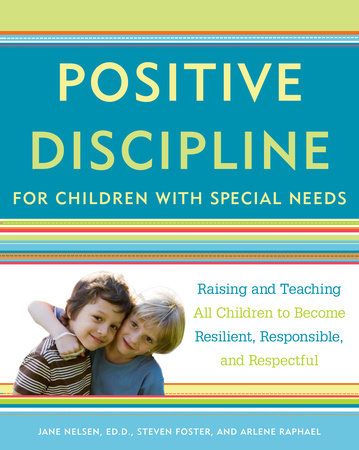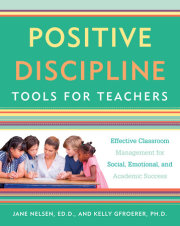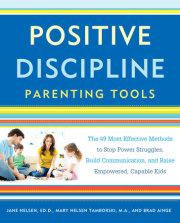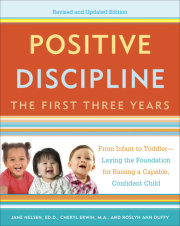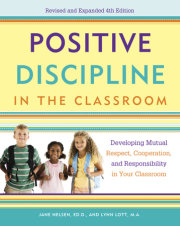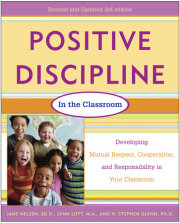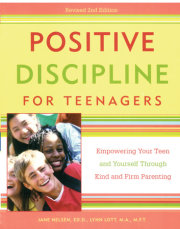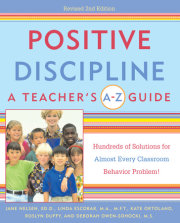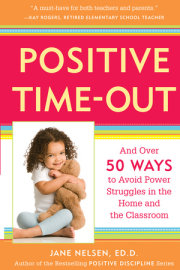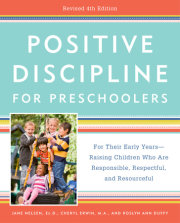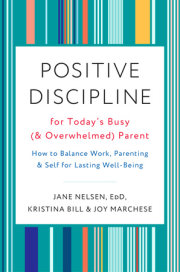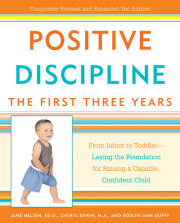Chapter 1“But My Child is Different!”Around the beginning of the twentieth century, in Vienna, there was a psychiatrist, Alfred Adler, who was a contemporary, and for a short time, a colleague of Sigmund Freud. In groundbreaking work, Adler broke away from Freud and developed the theories of human development that were later significantly enhanced by Rudolf Dreikurs. Positive Discipline is based on the theories and methods of Adler and Dreikurs.
Adler believed that the primary motivation for all human beings is to belong and feel significant, and that psychologically healthy people seek belonging and significance in socially useful ways. By “socially useful” we mean two things. First, that a person’s attempts to connect and be important invite a positive response from those around her. Second, we allude to a concept coined by Adler, which he called “Gemeinschaftsgefuhl,” sometimes translated as “social interest.” Adler believed that mental health can be measured by the degree of an individual’s positive contribution in his or her community. Thus, a primary purpose of
behavior is to act on that motivation to achieve a sense of belonging and significance. Sometimes children (and adults) make “mistakes” about how to find belonging and significance and “misbehave.”
All of us are constantly making decisions in our daily lives related to how we will achieve this sense of belonging. This process began the day we were born (and some believe in utero). These decisions play out in the context of the communities we find ourselves in from birth on: families, preschools, childcare, classrooms, peer groups, work groups and larger communities. It is crucial to understand that children with special needs are likely to make different decisions about how to find belonging and significance. If they are pampered (a huge temptation for many parents of children with special needs), they may decide that they feel loved when others give them “special service” and may decide to use their “special needs” to gain a sense of belonging and significance. Thus parents miss opportunities to help their children make decisions that lead them to feel capable. Another possibility is for children with special needs to be neglected, which could cause them to make other less than productive decisions about how to achieve belonging and significance.
Dreikurs noted that children can easily go about meeting their need to belong in misguided ways, referring to these ways as “mistaken goals of behavior” (which we will discuss in more detail in Chapter 2). He pointed out that children are excellent perceivers and noticers; if you doubt this, take a walk around the block with a toddler and notice how long it takes as your toddler finds everything endlessly fascinating. However, children are notoriously poor interpreters of what they see. As they interact with the people in their world children make decisions based on their understanding of these events. These decisions, often based on misinterpretations, lead them to pursue belonging and significance in ways that befuddle and sometimes enrage the adults who love them.
Three year old Courtney has Down Syndrome. She is playing with her mother when the phone rings. Her mother gets up to answer the phone and, as she is speaking, Courtney hurls herself at her mother’s knees and cries piteously. The mother shushes Courtney, which is briefly successful, but a few moments later finds her knees under assault once again. This is a scene that has played out numerous times and the mother is exasperated yet again. But she gets off the phone quickly and picks Courtney up and resumes their play, a little resentfully.
What could possibly be going on for Courtney? She has been playing with her mother who leaves the game when the phone rings. Courtney’s notices this, of course, but has learned to misinterpret it. She believes that the phone is more important to her mother than she is. Why else would she leave? Of course this is not true. However, “truth” does not matter here. If Courtney believes that it’s true she might develop a mistaken belief about what she must do to feel a sense of belonging with her mother. (There is more on mistaken beliefs in Chapter 2.) She might believe that she must be the center of her mother’s attention in order to feel connected and important. And her mother might feel as though she is neglecting Courtney any time she diverts her attention.
This scene can, and frequently does, play out in many homes, regardless of special needs status. This is an important point because when Adler and Dreikurs suggested that all human beings are driven to belong and seek significance in socially useful ways, they did not mean
except for children with autism or cerebral palsy or Down Syndrome or Attention Deficit Hyperactivity Disorder or developmental delays or any of the myriad conditions that we consider ”special needs.” All children are apt to misinterpret their experiences and pursue mistaken goals. However, Adler understood that children’s tendencies to make decisions based on their misinterpretation are exacerbated when one or more of the following is true:
1) They are pampered.
2) They are neglected.
3) They are handicapped. (Adler used this word before it become politically unacceptable.)
Children with special needs may be pampered. When pampering them, parents often underestimate their children’s capabilities and use their condition as a justification for low expectations. These children are usually clever enough to use their parents “sympathy” to manipulate for more special service.
Other children with special needs may be neglected because their parents are so discouraged that they give up and neglect their children emotionally if not physically. These children do not receive the guidance they need to learn to find belonging and significance in socially useful ways.
Innocent BehaviorsAs we shall see in later chapters, children with special needs can demonstrate behavior which is not socially directed but, instead, is “innocent,” i.e. related to their special condition. For example, a child with Tourette Syndrome is more than likely not misbehaving when he makes unusual noises. This is usually an “innocent behavior” resulting from his condition.
How we respond to this behavior can determine whether or not it becomes mistaken goal behavior. Their “special need” does not make
all of their behavior “innocent.” As we will also see in later chapters, children with special needs do indeed pursue mistaken goals as well. Differentiating between the two kinds of behaviors (innocent and mistaken goal) presents unique challenges to both parents and teachers. It is our intent to present Positive Discipline concepts and tools that will be useful to both.
The LensPositive Discipline is certainly not a cure for any of the conditions mentioned above.. However, since belonging and significance are so vital to a happy and fulfilling life, we must find ways to help
all children achieve these. Parents of young children with special needs struggle with a host of extra tasks that must be juggled constantly. These tasks include all of those that any parent faces: getting kids up and out the door in the morning, getting them to sleep, dressing, eating nourishing foods, potty learning (a much nicer way to think of potty “training”), finding childcare, etc. They must add to these tasks the often complicated overlay of whatever their child’s condition is. In addition, they often must get to doctor or clinic appointments and special education meetings while trying to figure out how they are going to ask for yet more time off from work or make it to their other child’s soccer game.
In parenting classes for parents of children with special needs, we work hard to present Positive Discipline not as a cure but as a
lens for parents to view their children (and themselves) differently. It can be said that these parents have two perspectives to overcome. The first is the traditional child-rearing perspective that suggests that when children misbehave they must either be punished in such a way that they will learn not to repeat the misbehavior or they must be rewarded when they are “good” to ensure that this good behavior will continue. The second is perhaps the tougher to overcome. It suggests that because their children have disabilities of some sort they do not have the same needs as other children. In the first class we hand out three-dimensional glasses to the parents as an experiential way to emphasize looking at their children’s behaviors and their own responses to this behavior differently.
Let us state it clearly: Children with special needs of any sort still have the same need to belong and feel significant in ways that invite positive responses from those around them. What is different is how we as parents and teachers must adapt our interactions with them to take their special needs into account without allowing these needs to block our vision of the children underneath.
Copyright © 2011 by Jane Nelsen. All rights reserved. No part of this excerpt may be reproduced or reprinted without permission in writing from the publisher.

